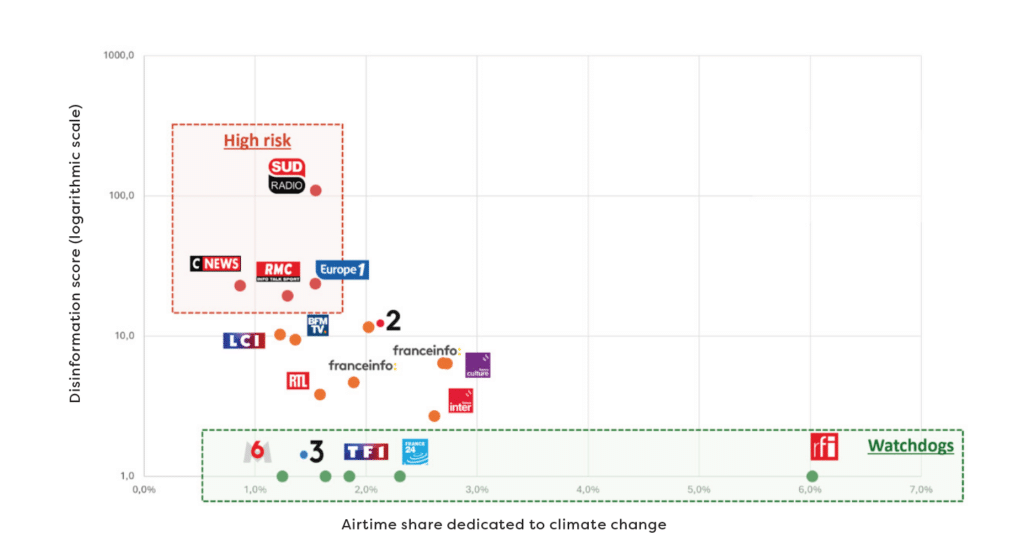Credit: illustration from Xavier Lucas, Le Nouvel Obs

In a groundbreaking first, an alliance of NGOs — Data For Good, QuotaClimat, and Science Feedback — has unveiled alarming findings from France’s first automated climate misinformation monitoring initiative.
The project, powered by artificial intelligence and fact-checking experts, reveals a significant spread of climate disinformation across traditional media (television and radio).
The analysis draws on data from the Observatoire des Médias sur l’Écologie and is part of the global Climate Safeguards initiative. It exposes how mainstream media — once thought more resilient — are vectors of climate misinformation.
🔍 Key findings:
- 128 verified cases of climate disinformation were detected over just three months — an average of 10 per week. This challenges the widespread assumption that misinformation is confined to social media.
- Misinformation peaks during major political events, such as the week of Donald Trump’s inauguration and the launch of national climate policy consultations in France. This suggests that public debate is vulnerable to manipulation, especially during key democratic moments.
- Sud Radio alone accounts for 45% of all identified climate disinformation, with the private media sector responsible for over 80% of all cases.
- Renewable energy and electric vehicles are the most targeted topics.
- When broadening the lens to include “discourses of delay” — content that undermines climate science, solutions, or experts — 373 such cases were identified. Right-leaning media were especially active in spreading these narratives.
- Only 2% of airtime on traditional media is devoted to climatic issues. This lack of coverage, combined with the volume of unreliable information, significantly increases the public’s exposure to manipulation on climate change.
The report calls for a strong response from journalists and regulators, and greater responsibility from advertisers. It also urges the public to be more critically aware of disinformation risks.
A full report with validated methodology and broader results will be released in September 2025.
Press:
- QuotaClimat – Eva Morel, Secretary General: eva.morel@quotaclimat.org
- QuotaClimat – Jean Sauvignon, Head of Data: jean.sauvignon@quotaclimat.org
- Science Feedback – Charles Terroille, Project & Investigative Research Officer: charles@sciencefeedback.co
- Data For Good – Lou Welgryn, Secretary General: lou@dataforgood.fr


